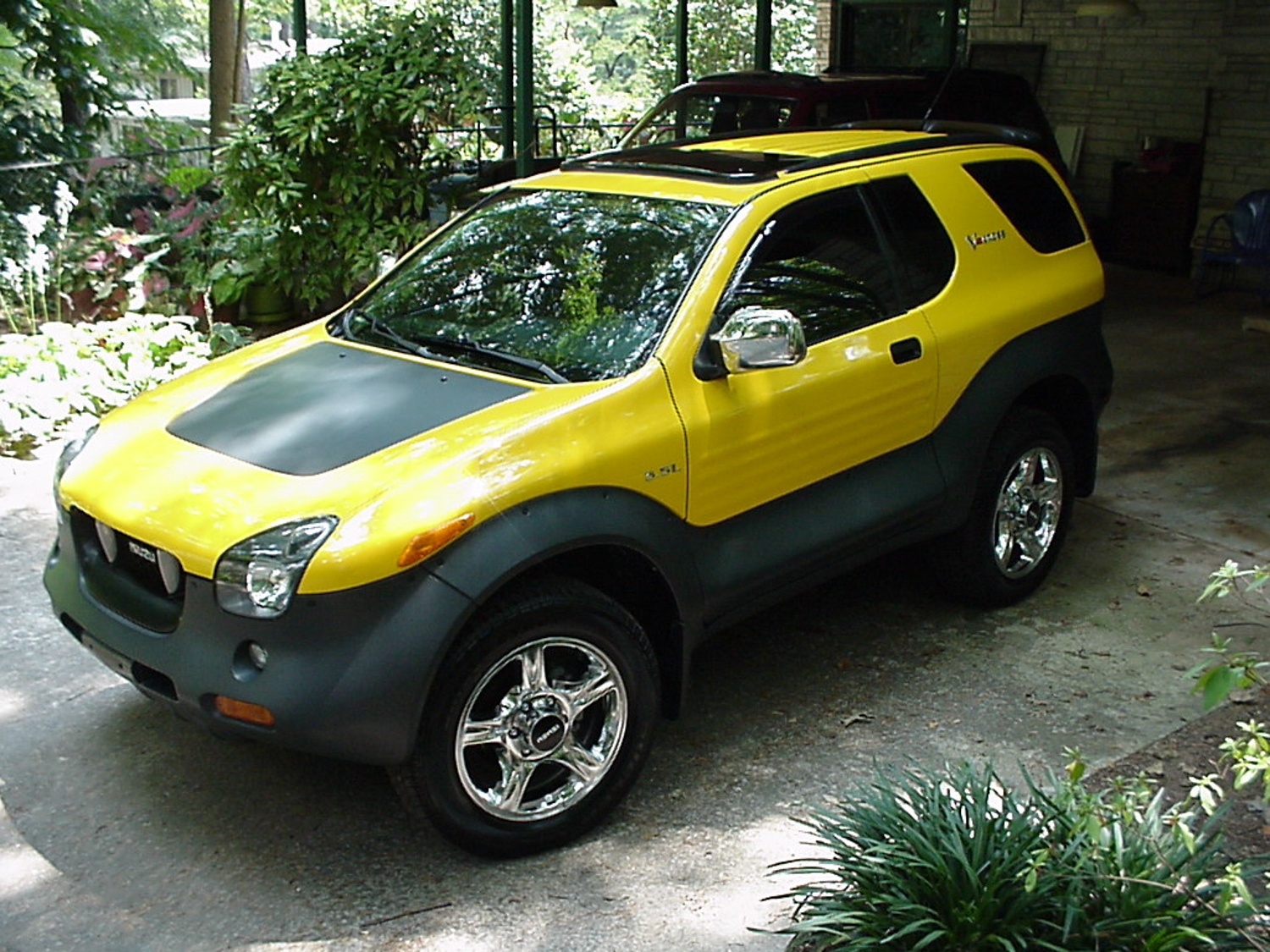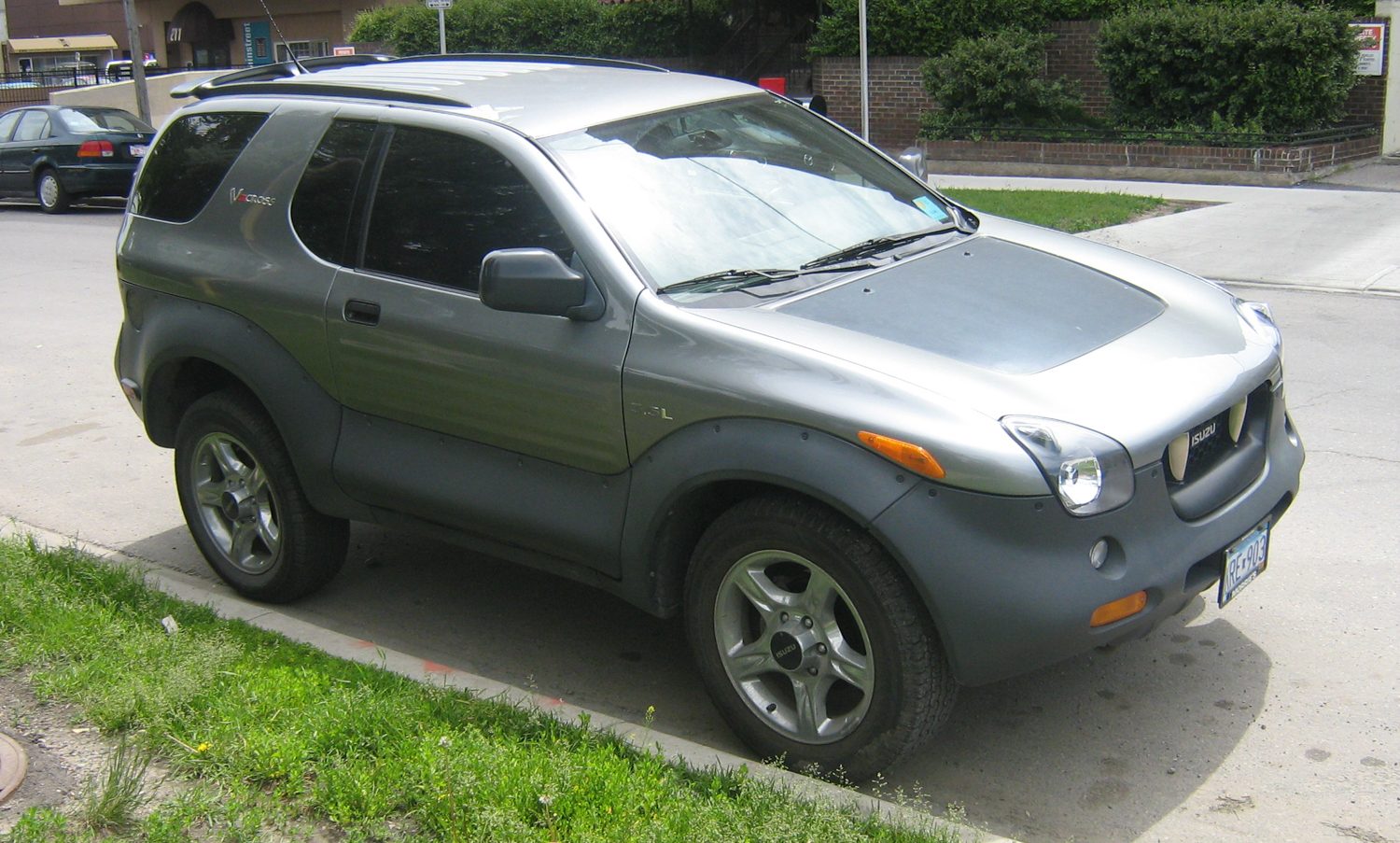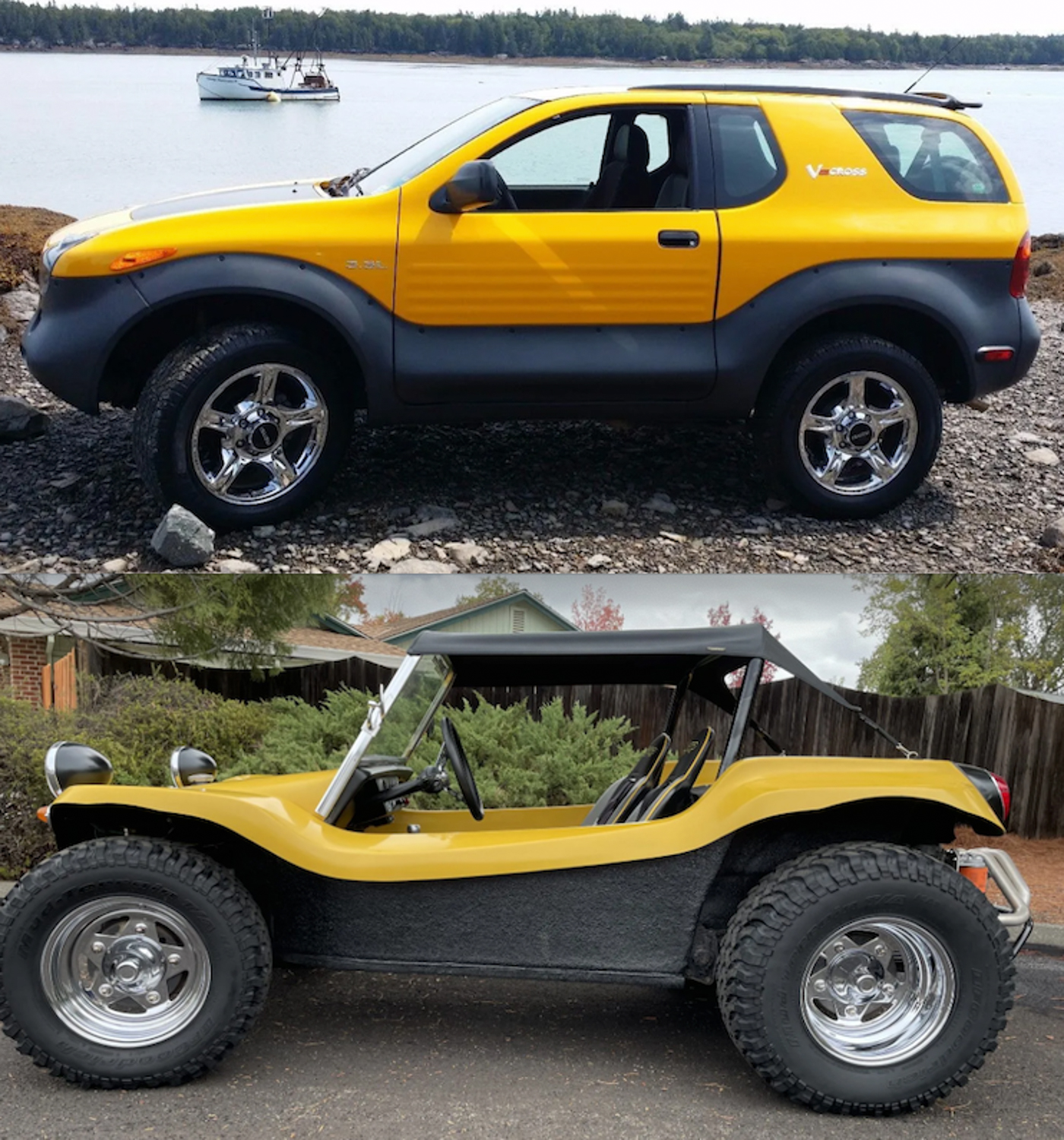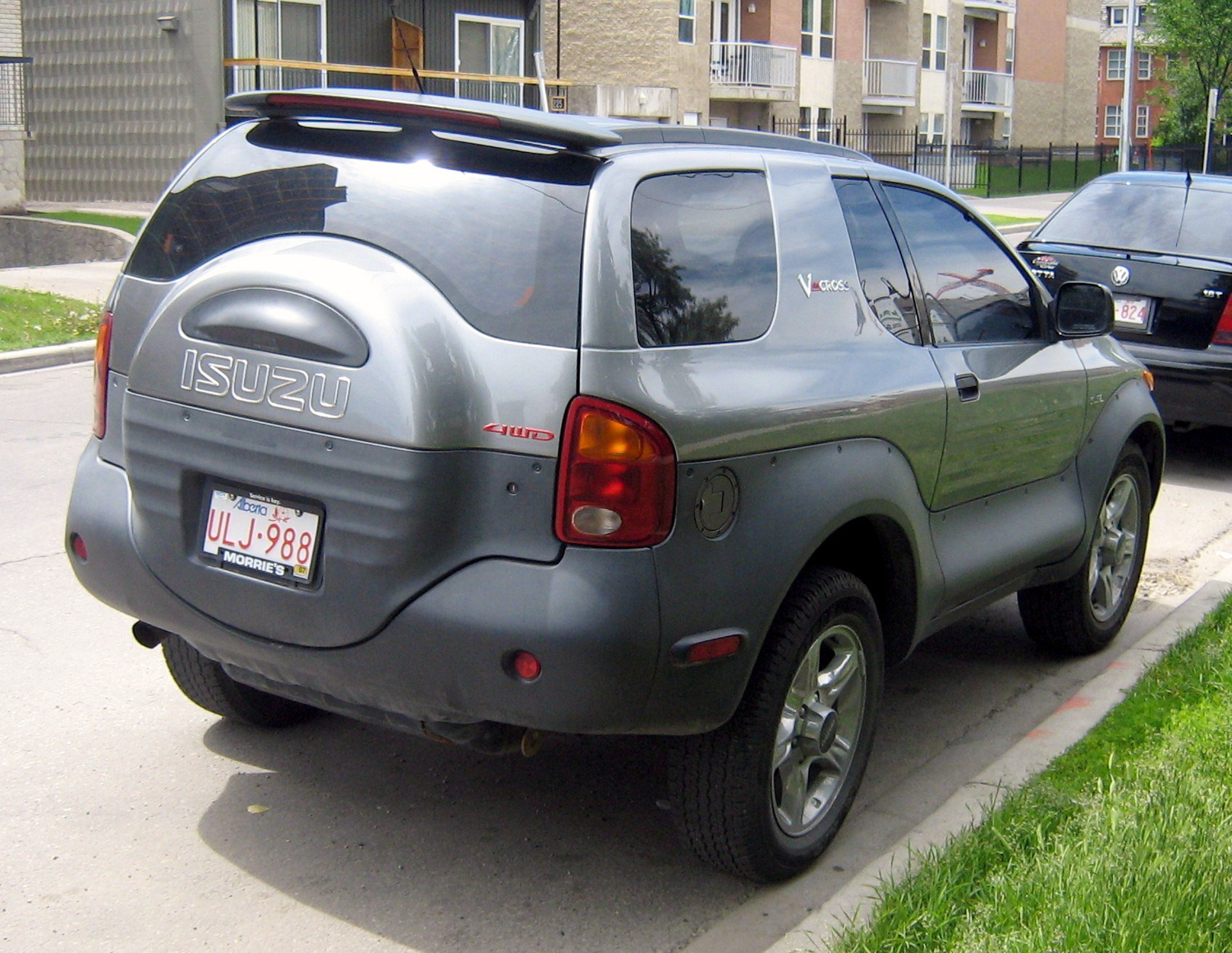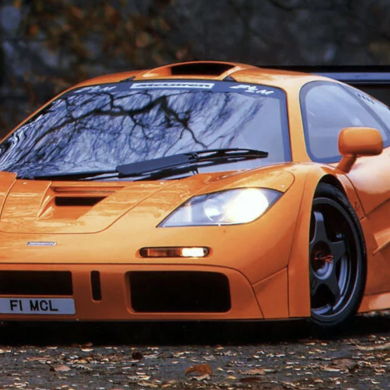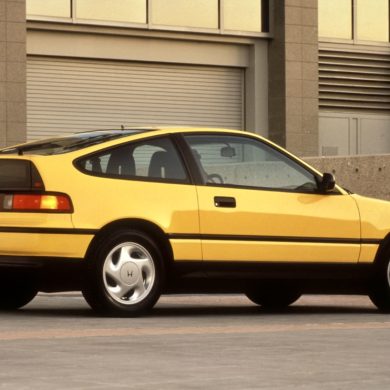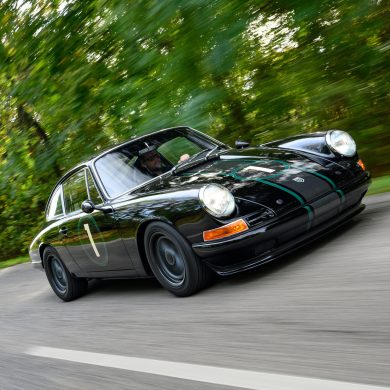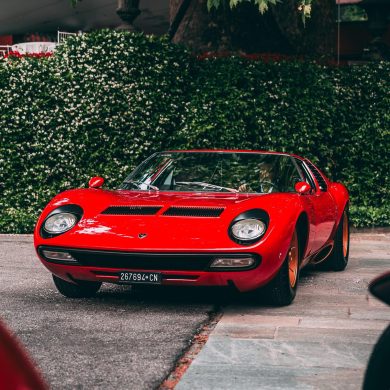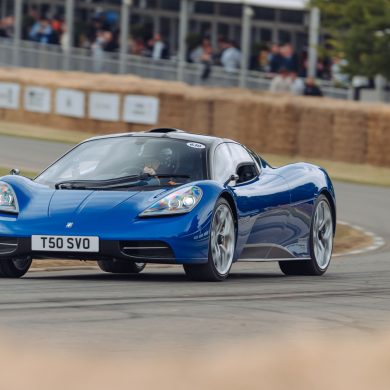Here’s a great party trivia starter for those of you in car circles. What vehicle won the 1999 Russian Spirit of Time Award given by the Russian Design Confederation, won the 1999 Australian Safari Rally, and won Motor Trend 1999 “Most Unique Styling” award? No, I’m not Joe Isuzu lying about an SUV. The answer is the Isuzu VehiCROSS.
Designed in the compact SUV classification, the VehiCROSS was a very cleverly constructed SUV assembled by using Isuzu components already in production. Cribbing heavily from the Trooper platform, the challenge for the design team was to execute a unique, sporty design that would capture the youth market while delivering a halo vehicle to the Isuzu brand. The concept design first arrived at the 1993 Tokyo International Auto Show where it stunned onlookers with its progressive and organic body architecture. Unlike anything out there, the organic shapes and details were familiar to buyers of sedans and sports cars, but up until the VehiCROSS, no company dared to attempt it on an SUV platform.
The response to the 1993 concept was so favorable, Isuzu committed to volume production. To accomplish this without the daunting time and cost of hardened steel body tooling, Isuzu engineers surmised that sales would be limited enough to justify lower volume tooling which yielded fewer ‘lifetime of tool’ body panels. Though final assembly and fitting costs would be higher, tooling amortization would be far less using ceramic composite tooling dies. This savings, coupled with judicious use of off-the-shelf Isuzu components enabled the production series to launch in 1997. Though only 1800 units were sold in the Japanese Domestic Market, over 4,000 units came to North America from 1999-2002 bringing the total production to nearly 6,000 units worldwide before the five-year production cycle concluded. By no means a sales success when measured in sales volume, the VehiCROSS was conceptually so close to the original idea it became an icon of risk and design exploration. Unfettered by corporate changes and enhanced by the rush to bring it to production, the concept to consumer idea had proven to be a success. The VehiCROSS has since become an iconic example of automotive design and, in recent years, has evolved into being a desirable collector’s car, in part due to the rarity and novelty of the design.
Surprisingly, because the VehiCROSS was designed as a body on frame package, the actual off-road performance was both robust and durable. Off-Road vehicle magazines continually tested the VehiCROSS, challenging it against more traditional designs, discovering it would continually score higher than other brands in similar categories. As a flagship statement, Isuzu had hoped the VehiCROSS would be a showcase for off-road technology including specialized suspension, rugged underbody cladding, and constant 4WD with exceptional wet and ice road traction through multi-sensor wheel spin control and power delivery. Although many mechanical features were important to the development of the VehiCROSS, ultimately it is the unique design of the body and interior that deliver the greatest impact.
The first thing you notice about the VehiCROSS is the proportions. The large wheels and short wheelbase coupled with a tall profile give the vehicle an almost full-sized toylike quality. The short overhangs give it a very advanced look which is further enhanced by the radical fluid underbody cladding which encircles the entire form including the front and rear of the car. The organic themes continue in the glass lines with a large C-post dividing the door glass from the rear side glass. This feature is even more enhanced on bright colored vehicles which add contrast to the underbody and glass lines. Clever design elements reside on nearly every surface including a satin black hood which reduces road glare and elongates the windshield line visually down the front of the car. The resultant body cladding is certainly reminiscent of the earliest funky, short wheelbase Meyers Manx which used the underbody fender line as a darker surface to raise the eye to the sportier upper surface lines.
Perhaps the most interesting surface treatment on the VehiCROSS is the unusual packaging for the rear. Most SUVs of this period housed a full spare tire mounted on the rear access door. Isuzu continued this tradition but instead chose to house the tire inside the rear compartment, shrouding it in body material, suggesting the archetypal element but smoothly enclosed. The body-colored arc into the rear glass is another visual statement that hunkers the upper body line down into the bottom of the form.
Brilliantly executed across the rear of the form, the organic treatment is consistent at every corner. Even the doors with rugged flute lines convey a smooth almost custom look that delivers a futuristic vision of a rugged tomorrow. The front of the VehiCROSS reveals more innovative ideas including tapered headlight forms that triangulate softly into the hood, clean rounded corner grille openings, and organic side marker lights. Even the soft black roof trim delivers a cohesive design statement completing the look and feel for one of the most visually dynamic SUVs ever built.
The interior, while more traditional and production oriented, delivers along the same lines as the organic exterior but offers some nice touches including Recaro seats displaying two tone interior colors that reflect the contrasting themes in the exterior upper and lower body lines. Ultimately, the VehiCROSS was not only a risky and successful design statement, even under aesthetic scrutiny, the final design was beautifully executed, and has held up surprisingly well today. Worthy of consideration as one of the most daring concept vehicles of the 20th century, the Isuzu VehiCROSS still delivers a powerful punch to the SUV landscape, especially among a sea of rather tepid SUVs that have arrived in the ensuing 30 years. An inspiring design despite the notion that Joe Isuzu might still be out there conjuring his next lie about what the future might look like.


